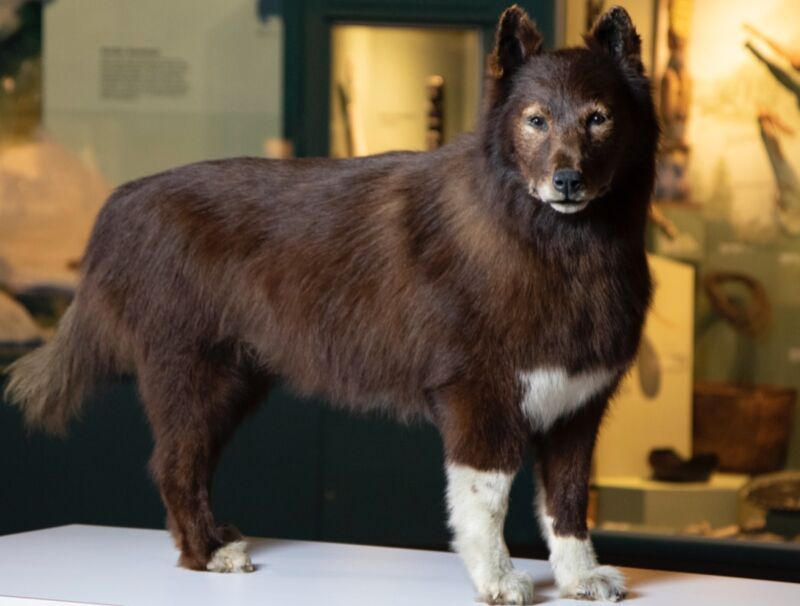Scientists sequenced the genome of Balto, famous sled dog of 1925 “Serum Run”

Enlarge / After Balto died in 1933, his taxidermy mount was put on display at the Cleveland Museum of Natural History. (credit: Cleveland Museum of Natural History)
In 1925, a sled dog named Balto led his plucky canine team on the last leg of a grueling 127-hour dogsled relay across Alaska to bring lifesaving medicine to the people of Nome-the famous "Serum Run." Balto was lionized for the feat, even inspiring a 1995 animated film and two sequels. Now scientists have sequenced the dog's genome for the first time and compared it to modern dog breeds, shedding light on why Balto and similar sled dogs from that period proved well-suited to thrive in the harsh winter environment.
It turns out Balto was just part Siberian husky, and, contrary to popular legend, he was not part wolf. The authors even used the sequenced genome to reconstruct Balto's physical appearance. These and other findings appear in a new paper published in the journal Science. It's one of several featured in a special issue reporting on results from the Zoonomia Project, an international collaboration to sequence and compare the genomes of 240 mammals in order to discover the genomic basis of traits essential for all animals, as well as changes that underlie the unique traits of individual species.
The fact that the DNA from a tiny sample of Balto's skin can provide new scientific insights is a powerful reminder of how advances in science continually allow us to glean new information from museum collections," said Gavin Svenson, chief science officer of the Cleveland Museum of Natural History in Ohio, where Balto's taxidermied remains are housed. Every one of the millions of objects in our museum has the potential to reveal an important clue to a future scientist, who in turn can enhance our understanding of the past, present, and future of the world around us."